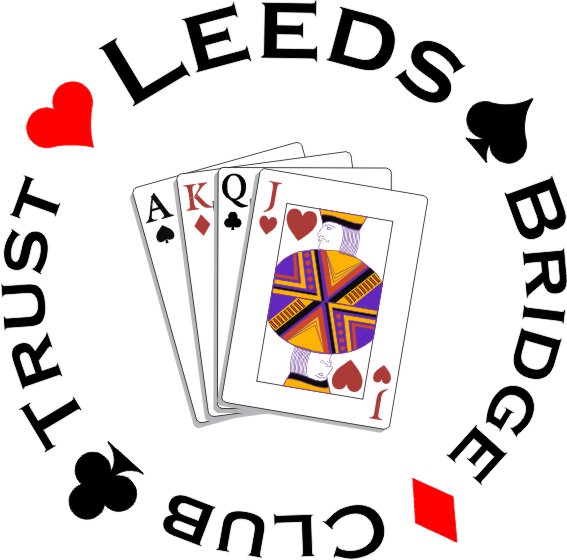- Home
- Club Location
- LBCT Events Calendar
- Face-to-Face Classes and Supervised Sessions
- LBCT Seminars and Training
- Face-to-Face Yorkshire League 2023 to 2024
- Online Yorkshire League 2024
- Face-to-Face Yorkshire League 2022 to 2023
- Online Yorkshire League 2023
- Results
- Trophy Winners 2022 to 2023
- Past Trophy Winners - 2010 to 2022
- Rotas & Volunteering
- Membership and Table Money
- Visitors
- News
- LBCT Standard System
- Covid: Club Guidelines
- About
- Contacts
Leeds Bridge Club Trust is a company limited by guarantee number: 9490140, registered in England and Wales and a registered charity, number 1161317
Registered Office: Moor Allerton Sports & Social Centre, Stonegate Road, Leeds LS17 6EL
The Club is affiliated to the English Bridge Union and the Yorkshire Contract Bridge Association
Our History
This history of Leeds Bridge Club was researched by Raymond Wiener, a long-standing and popular member of the club until his death in 2013.
A Leeds and District Contract Bridge Board was formed in May 1937. Its function appears to have been to work with the various bridge clubs then operating in Leeds for the purposes of holding bridge-community wide events. The first Leeds Bridge Congress took place on 10-12 February 1939 at the Victory Hotel.
Leeds-based clubs included Aysgarth Bridge Club in Headingley, and a club operating out of Moortown Memorial Hall (now the Moor Allerton Sports and Social Centre).
The quality of teams representing Leeds was matched only by that of leading teams in London; many members of Yorkshire County Team were drawn from Leeds and Leeds –based players included Harold Franklin who became a leading Tournament Director across the world, and Irving Manning who played for Great Britain in the Olympiad in Tenerife in May 1974.
From 1946 onwards, duplicate bridge in Leeds became nomadic. It was played under the name of Moortown Bridge Club:
- From 1946 to 1966 – at Moortown Corner (later a Casino and now closed)
- From 1966 to 1970 – at the Jubilee Hall, Chapeltown on Tuesdays and Thursdays
- From 1970 to 1972 – at 5 Swinegate on Tuesdays (Sunday League matches were played in the Griffin or Metropole Hotels)
- From 1972 to 1978 – at Stainbeck Parade, Harrogate Road
From 1978, the Moortown Bridge Club closed and duplicate bridge was played under the name of Leeds Bridge Club. It too was nomadic. From 1978–1986 it played at:
- St Chad’s Church Hall, Headingley
- The Polish Club, Chapeltown
- The Victoria Hotel, Great George Street
- The Queens Arms, Harrogate Road
- The Social Club, Street Lane
From 1987 to 1998, Leeds Bridge Club played in a privately owned club in Meanwood.
From 1998 onwards, the Club has played at the Moor Allerton Sports and Social Centre, extending the centre, at its own cost, to provide a bespoke bridge suite.
